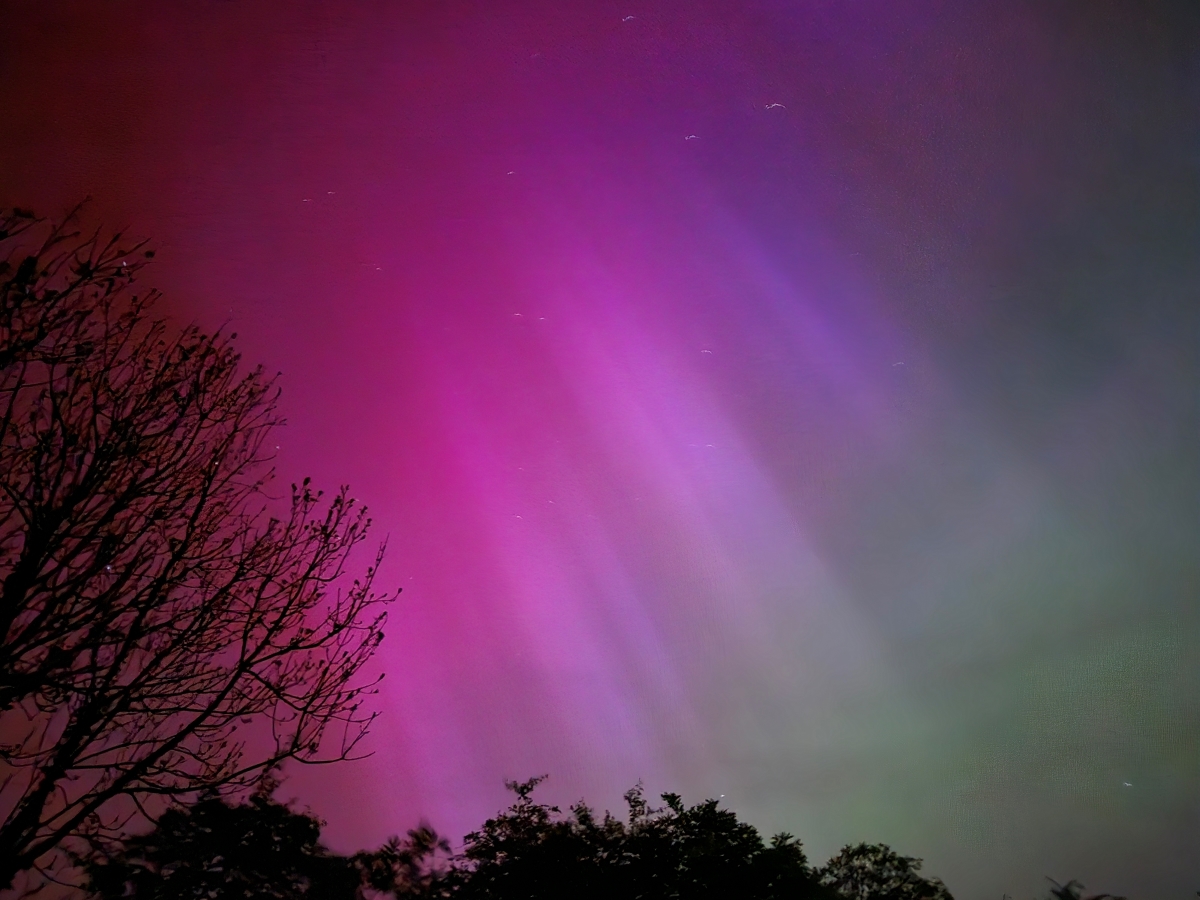
The extremely strong geomagnetic storm of 10 May 2024 created an intense aurora which was visible much further south than usual, with the UK receiving a spectacular display. Even in southern England, where Biral is headquartered, the skies lit up in the late evening with colours of green, purple, red and blue.
The aurora is formed by fast-moving streams of charged particles erupted from the sun’s outer atmosphere colliding with nitrogen and oxygen in the upper layers of our own atmosphere. Earth’s magnetic field lines guide these fast-moving particles into the atmosphere above the fringes of our polar regions. These collisions release a pulse of light we see as the aurora. The aurora is not normally visible as far south as the UK, but is instead associated with the more northern regions of Europe such as Iceland and northern Scandinavia. However, when a particularly strong burst of charged particles enters our atmosphere, the area affected by the aurora expands further south and the display intensifies. Since the arrival of the charged particles disturbs the Earth’s magnetic field, these bursts of higher than normal activity are called “geomagnetic storms”. They are rated at G1 (minor) to G5 (extreme). The one which occurred on 10 May was so strong it was classified as a rare G5, or “extreme”, storm. The last G5 occurred more than twenty years ago.
The arrival of energetic charged particles also changes the pattern of electrical conductivity in our upper atmosphere, which can drastically alter how radio waves travel through it. This means that radio communications are often disrupted during a geomagnetic storm, and can cause issues with other radio-based activities such as lightning location, which commonly uses networks of radio receivers. Since Biral’s BTD technology does not use radio-based techniques to detect and range lightning, our thunderstorm warnings are unaffected by geomagnetic storms. This was demonstrated during the recent extreme geomagnetic storm affecting the UK, where Biral’s engineers assessed data measured by the BTD systems during this event and found the sensors continued operating at high performance throughout, with no anomalies or false alarms.
During geomagnetically active times when significant disruption to radio communication and even GPS tracking occurs, it is reassuring to know that Biral’s BTD technology will continue to provide its signature high performance, alerting you to thunderstorms despite the presence of geomagnetic storms!